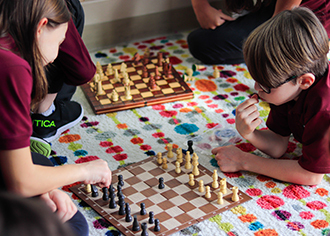Introduction
The SABIS® Mathematics curriculum builds on a global outlook for learning Mathematics. The standards set forth are the culmination of a vast and broad-based effort to create a program of KG-12 that ensure all students are college ready in mathematics by the end of high school.
The standards in this document reflect the expertise of over 100 years of teaching mathematics. The standards evolved from a long history of dedicated teachers and academic controllers as well as a thorough understanding of the different international models implemented all over the world.
The standards are based on research and experience, aligned to several curricula, rigorous, and benchmarked by universally accepted criteria. Each standard is either essential for college readiness or necessary for the development of other standards that are essential for college readiness.
Elements of the Mathematics Curriculum
The grades are divided by stages:
The early stage prepares students to master the cornerstone of learning mathematics (arithmetic). The primary stage provides a solid foundation for algebra. The middle stage makes sure students will be able to tackle calculus before graduation. The secondary stage provides the necessary background for several external exams (SAT, AP, etc.). Most importantly, it gives students the edge for being accepted into top universities and to choose the major they prefer.
End Objectives (Qualifications)
The SABIS® Mathematics Curriculum while unified for grades KG - 7, it branches off in grades 8 - 12 into honors and regular.
The primary stage initiates students into their school life. Students learn to master and apply the rules of arithmetic. Formal algebra using proper terminology and techniques is the main goal of the middle phase. Formal geometry with two-column proofs, modeling with functions, and trigonometry are taught in the secondary phase.
Books of the Mathematics Curriculum
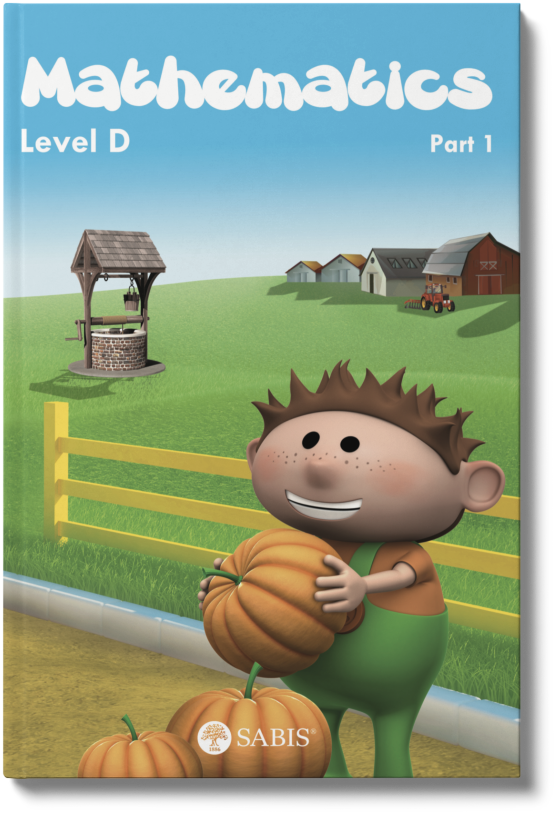 Mathematics Level D Part 1
Mathematics Level D Part 1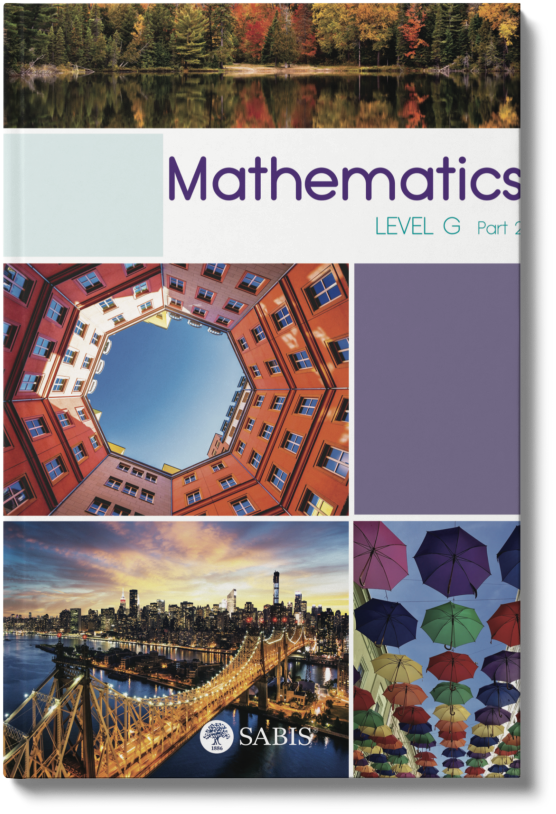 Mathematics Level G Part 2
Mathematics Level G Part 2 Mathematics Geometry 2
Mathematics Geometry 2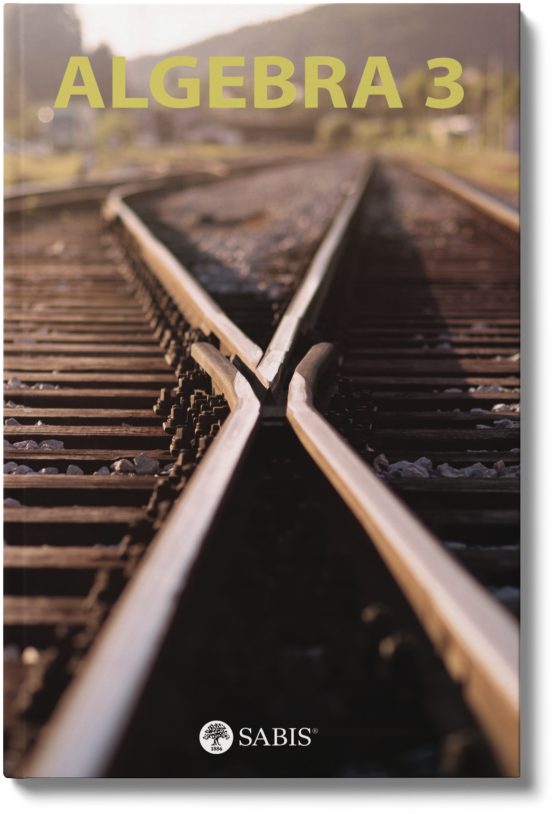 Mathematics Algebra 3
Mathematics Algebra 3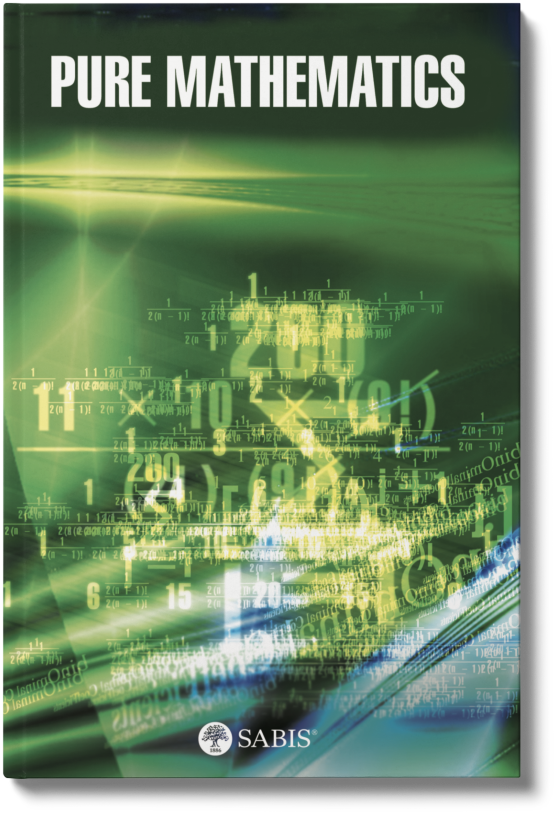 Mathematics Pure Mathematics
Mathematics Pure Mathematics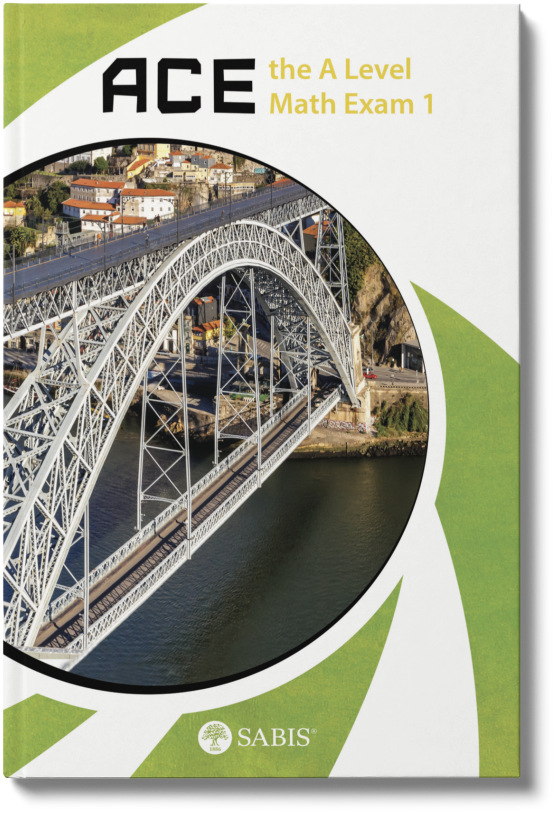 Mathematics ACE the A Level
Mathematics ACE the A Level
Math Exam 1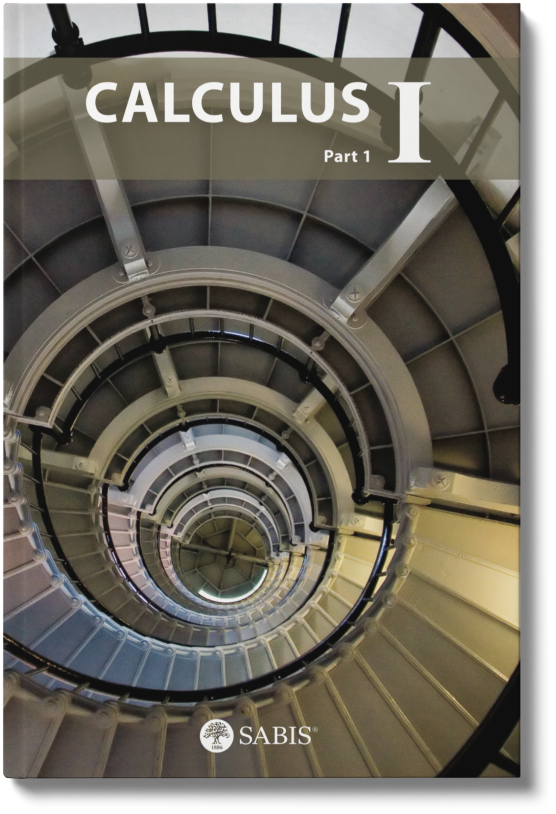 Mathematics Calculus | Part 1
Mathematics Calculus | Part 1 Curriculum Aims
Grades K - 5
At the beginning of their education, students learn the basic terminology of math. They start to practice writing skills and techniques. Grades K-2 prepare students for arithmetic operations. They gain and master the skills of basic addition and subtraction facts to help them start multiplication in grade 3. The basic facts are memorized in phases; week after week, the students gain more fluency in these facts. The accuracy and fluency in these essential facts are achieved through daily practice of mental arithmetic routines. Armed with the basic knowledge of addition and subtraction, the students solve the basic types of word problems using pictures and visual representations. This leads them to the abstract algorithms of addition and subtraction. Students gain basic skills of algebraic thinking through their work with word problems and patterns. Preliminary knowledge of the terminology of measurement, geometry, and geometric measurements gives the students a feel of the end purpose of mathematics: a tool to serve them in their real life applications as well as their future academic studies.
Grades 3-5 stress the essentials of arithmetic until mastery. Students master the four operations on whole numbers as well as fractions and decimals. Mental math techniques also emphasize the importance and the use of the properties of operations. The students apply the rules of the order of operations to simplify expressions involving positive rational numbers. Their perception of fractions evolves from symbols (representations) to numbers. Students use fractions and decimals to solve increasingly difficult word problems.
Students learn the basic facts of geometry. These facts are used to help with geometric measurements. Measurements provide a good opportunity to apply the arithmetic facts and to start reflecting on algebraic methods. Students use graphical information to draw inferences and conclusions about data sets. Using data in graphical displays prepares the students for deeper work in data analysis.
Grades 6 - 8
Students learn to understand the number system and the properties of operations that apply to all real numbers. Using these properties, students generate equivalent equations to produce solutions. They also learn linear equations and graphing lines on the coordinate plane. They analyze functions given graphically and algebraically and in tabular form. They solve systems of linear equations and inequalities using a multitude of methods. Students work with polynomials and they solve equations using factorization. They also learn and employ their knowledge on ratios and proportions particularly to solve word problems. They write algebraic expressions to solve contextual problems.
Students deepen their knowledge in geometry as well as geometric measurements. They prove congruency and similarity using transformations. They apply the Pythagorean Theorem to find missing lengths in right triangles. They use formulas to compute the volume of regular and composite solids.
In statistics, they study and analyze bivariate data by looking at their scatterplots and by considering associations in categorical data.
Grades 9 - 12
At the beginning of their education, students learn the basic terminology of math. They start to practice writing skills and techniques. Grades K-2 prepare students for arithmetic operations. They gain and master the skills of basic addition and subtraction facts to help them start multiplication in grade 3. The basic facts are memorized in phases; week after week, the students gain more fluency in these facts. The accuracy and fluency in these essential facts are achieved through daily practice of mental arithmetic routines. Armed with the basic knowledge of addition and subtraction, the students solve the basic types of word problems using pictures and visual representations. This leads them to the abstract algorithms of addition and subtraction. Students gain basic skills of algebraic thinking through their work with word problems and patterns. Preliminary knowledge of the terminology of measurement, geometry, and geometric measurements gives the students a feel of the end purpose of mathematics: a tool to serve them in their real life applications as well as their future academic studies.
Grades 3-5 stress the essentials of arithmetic until mastery. Students master the four operations on whole numbers as well as fractions and decimals. Mental math techniques also emphasize the importance and the use of the properties of operations. The students apply the rules of the order of operations to simplify expressions involving positive rational numbers. Their perception of fractions evolves from symbols (representations) to numbers. Students use fractions and decimals to solve increasingly difficult word problems.
Students learn the basic facts of geometry. These facts are used to help with geometric measurements. Measurements provide a good opportunity to apply the arithmetic facts and to start reflecting on algebraic methods. Students use graphical information to draw inferences and conclusions about data sets. Using data in graphical displays prepares the students for deeper work in data analysis.
High School Math Courses
Integrated Mathematics I
This is the first in a series of 3 courses that integrate the study of the branches of mathematics commonly studied separately in High School: algebra, geometry, trigonometry, probability, and statistics. This course covers linear equations and linear inequalities in one or two variables and systems of linear equations and linear inequalities. Functions, in general, are introduced with special emphasis on linear and exponential functions. Radical expressions are simplified, rationalized, and submitted to the four arithmetic operations. Basic geometric facts and simple proofs are included in the course, with a focus on preserving congruence through rigid transformations in the plane and observing the characteristics of similarity when non-rigid transformations are applied. We conclude with a chapter on statistics that covers measures of tendencies, graphical representations of data, and the analysis of bivariate data.
Integrated Mathematics II
True to its name, Integrated Math II combines the study of elementary number theory, algebraic functions and expressions, geometric truths and their proofs, statistics, and probability. This is the second level of a high school series developed for the Common Core State Standards. The working set of numbers expands to the complex numbers. The first half of the course deals with radicals and polynomials, functions - in general, composing them and finding their inverses, when possible, absolute value functions and piece-wise defined functions in particular, followed by a focus on quadratic functions, completing the square and deriving the quadratic formula. Part 1 concludes with a study of counting principles and probability. Part 2 approaches geometry from an axiomatic point of view: from definition and postulates to proving theorems. Theorems are proven in differing ways: directly, indirectly, always applying logic, sometimes using analytical geometry. Theorems concerning similarity, circles and right triangles are the focus and this leads to an introduction to trigonometry. Conic sections are modeled based upon their geometric definitions and then these are used to derive their algebraic representations. Geometric measurements are also covered.
Integrated Mathematics III
This course is the third and final course in a series developed for the integrated pathway of the Common Core State Standards. Upon completion, students will have mastered the material covered in a traditional honors level American high school sequence of Algebra I, Geometry, and Algebra 2.
Integrated Math III starts by introducing the Binomial Theorem, and then deepens the study of polynomials, polynomial functions, rational, exponential and logarithmic functions, and their various applications. The course includes a thorough study of trigonometry. Students define trigonometric functions of directed angles, graph trigonometric functions and their inverses, prove and use trigonometric identities, and solve trigonometric equations. Students reason critically and bring all of their previous knowledge to bear as they problem solve and use mathematics in real life situations. Successful completion of this course is a graduation requirement and a prerequisite for AP® courses.
Integrated Mathematics I-II and II-III
For interested students, it is possible to take this series of three courses in two years instead of three. It takes devotion to one's studies. Nothing is omitted; students work at 1.5 times the typical pace. The pay-off is that it allows a student another year to study post-AP® college level courses before graduation.
AP® Statistics
This course is designed to prepare students for the AP® Statistics Exam from the College Board. Students who do well on this AP® exam may receive credit for one semester of college statistics
Its four main themes, as recommended by the College Board, are:
The use of graphical and numerical techniques to study patterns in data
The development of experimental designs that generate unbiased data
The understanding of the underlying probability conceits present in random phenomena
The selection of appropriate models of statistical inference
Specific topics include: histograms, stem plots, and box plots; mean, median and mode; standard deviation, range and interquartile range; counting techniques; properties of probability functions; conditional probability and independence; Bayes' Theorem; the binomial distribution; the normal distribution; the t-distribution; experimental design; statistical inference; hypothesis testing; the chi-square distribution; correlation and linear regression. Calculators are used extensively throughout the course.
Prerequisite: Successful completion of Integrated Mathematics III AP® Calculus AB
This course is designed to prepare students for the Calculus AB Advanced Placement® Exam. Students who do well on this AP® exam from the College Board typically receive credit for one semester of college calculus.
In AP® Calculus AB students will:
Work with functions represented in a variety of ways: graphically, numerically, analytically, or verbally
Understand the meaning of the derivative in terms of a rate of change and local linear approximation and use derivatives to solve a variety of interesting problems.
Understand the meaning of the definite integral both as a limit of Riemann sums and as the net accumulation of change and use integrals to solve a variety of real-life problems.
Communicate mathematics both orally and in well-written sentences and explain their solutions to problems
Model a written description of a physical situation with a function, a differential equation, or an integral.
Use technology to help solve problems, experiment, interpret results, and verify conclusions.
Determine the reasonableness of solutions, including sign, size, relative accuracy, and units of measurement.
Develop an appreciation of calculus as a single coherent body of knowledge and as a grand human accomplishment.
Prerequisite: Successful completion of Integrated Mathematics III with an average ≥ 85%. AP® Calculus BC
This course is designed to follow Integrated Mathematics III and prepares students for the Calculus BC Advanced Placement® Exam from the College Board. Students who do well on this AP® exam may receive credit for two semesters of college calculus. Topics include the following:
All of AP® Calculus AB; a thorough study of integration techniques; improper integrals and L'Hopital's Rule; infinite sequences and series and convergence; power series and Taylor Series; conic sections; parametric equations and polar coordinates. Students are encouraged to use the technology of calculators in graphing, differentiation and integration. Students are expected to carry out epsilon-delta and sequence/series convergence proofs.
Prerequisite: Successful completion of Integrated Mathematics III with an average ≥ 90%. AP® Calculus BC + Multivariable Calculus
This course is for students who have completed AP® Calculus AB and want to take the AP® Calculus BC exam along with spending two terms studying multivariable calculus and differential equations.
Prerequisite: Successful completion of AP® Calculus AB. Post AP® Discrete Mathematics
Discrete Mathematics is a survey of multiple topics in Discrete Math. It starts with propositional and predicate logic and is followed by combinatorics and graph theory with an emphasis on proofs.
Prerequisite: Successful completion of AP® Calculus BC. Post AP® Multivariable Calculus, Differential Equations, & Linear Algebra
Just as the name proclaims, this course is for a student who has completed AP® Calculus BC, and it covers multivariable calculus, differential equations, an intro to number theory, and linear algebra.
Prerequisite: Successful completion of AP® Calculus BC. 


